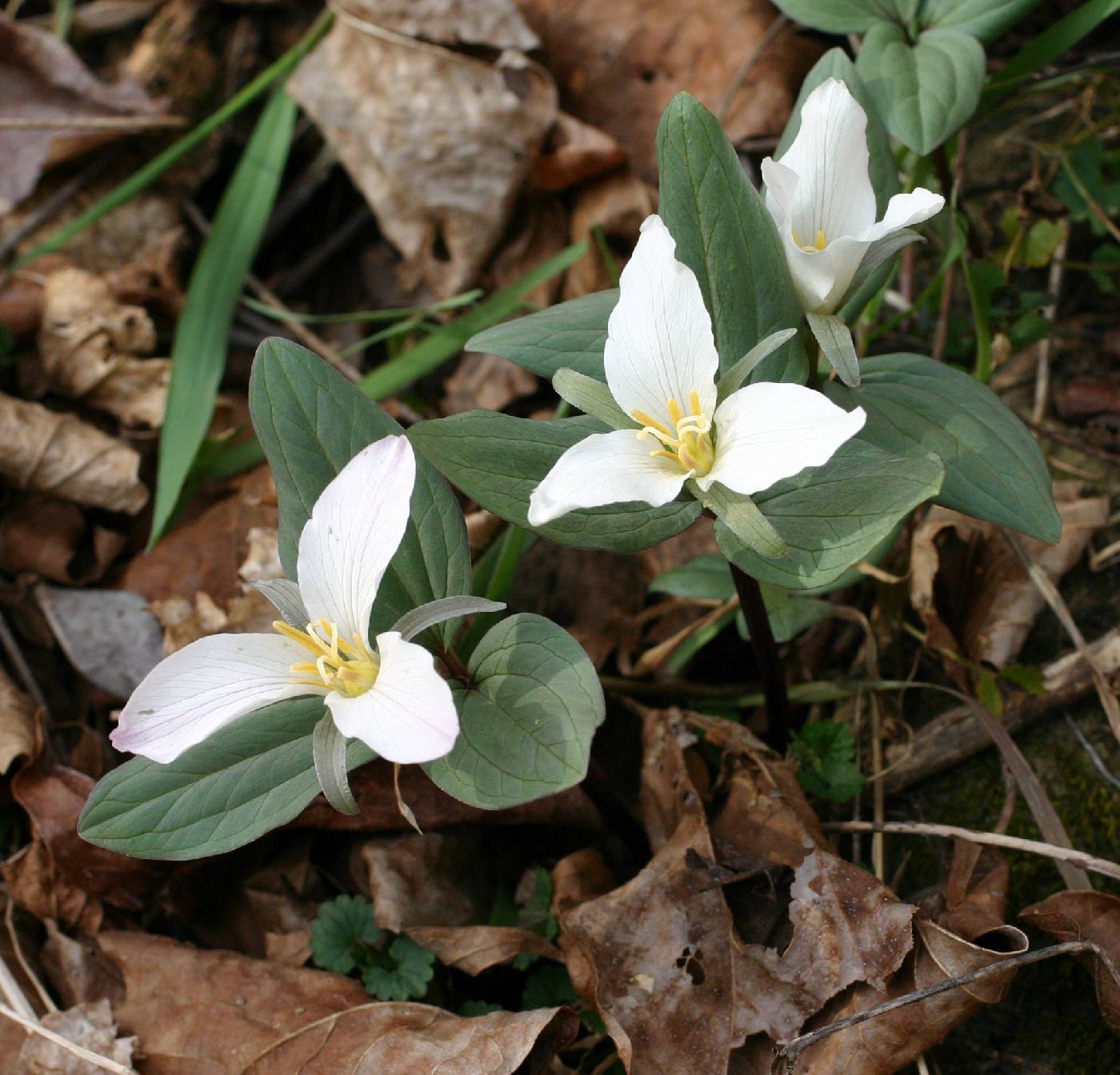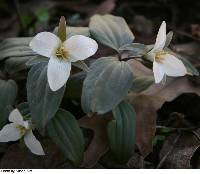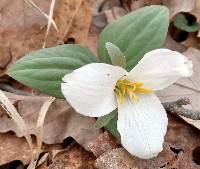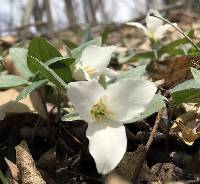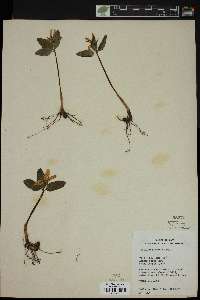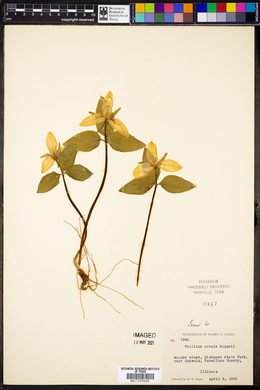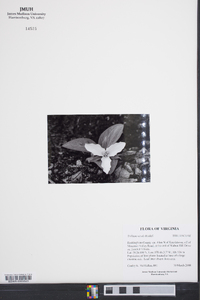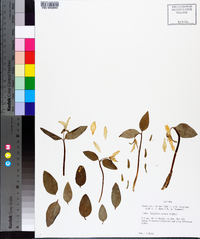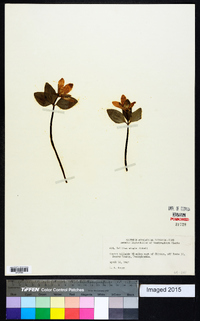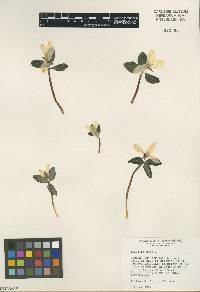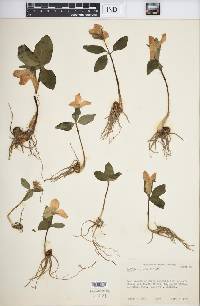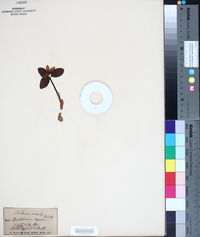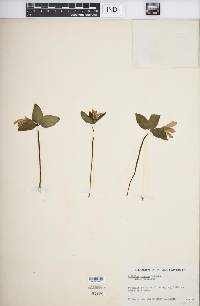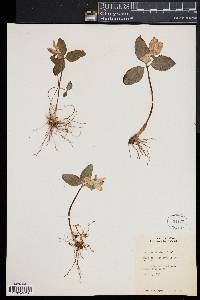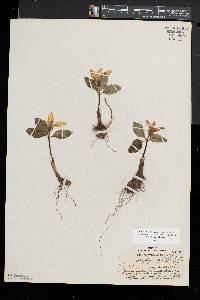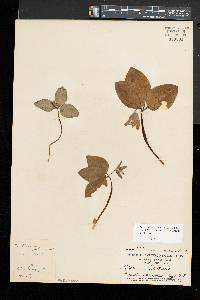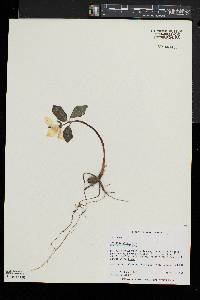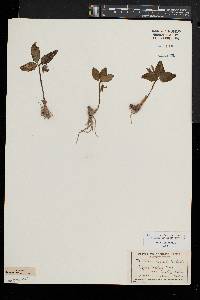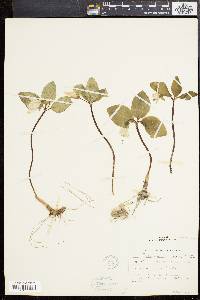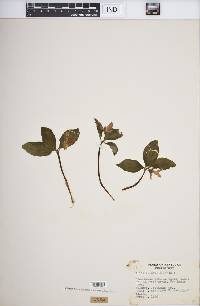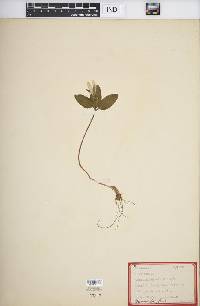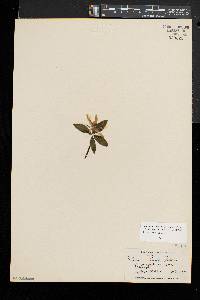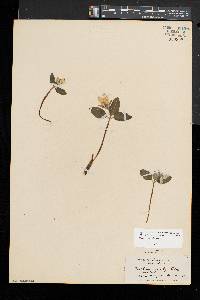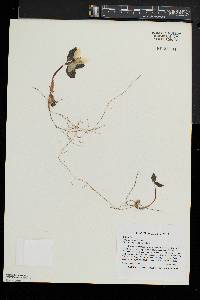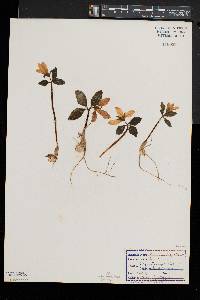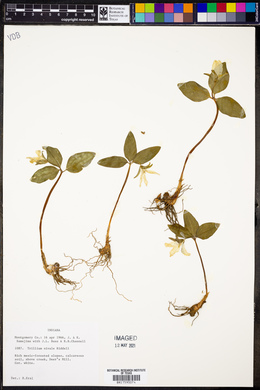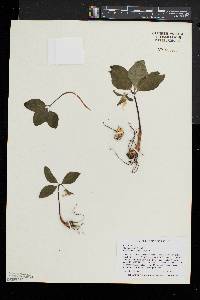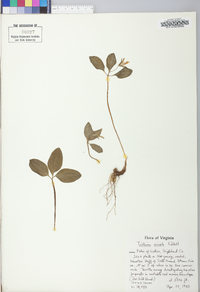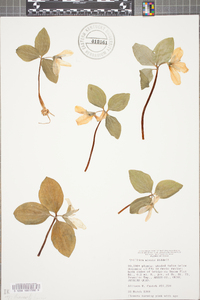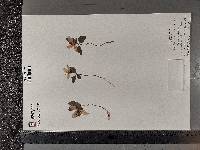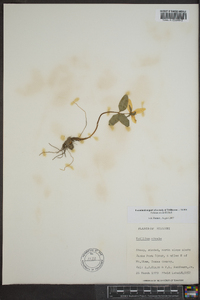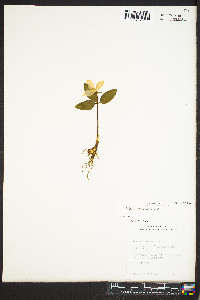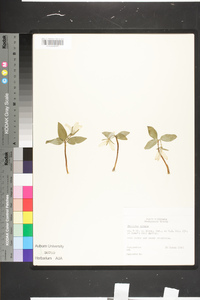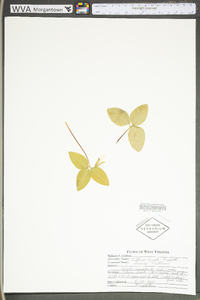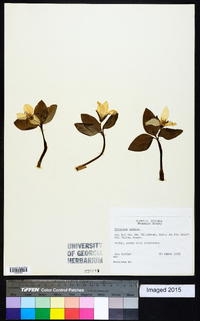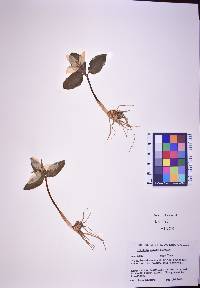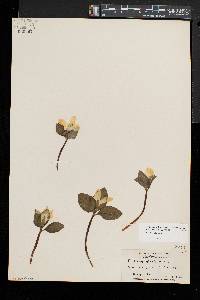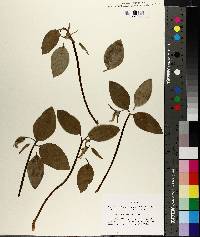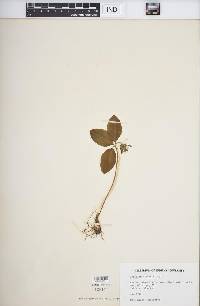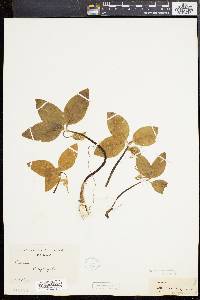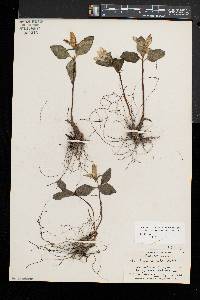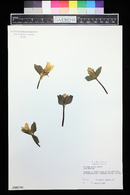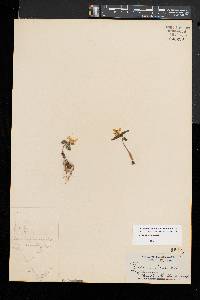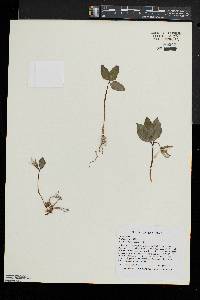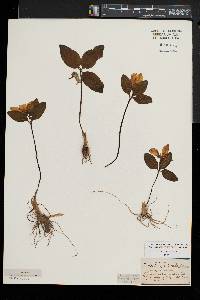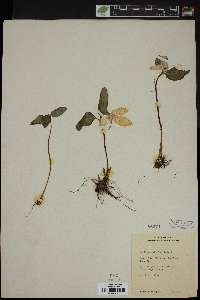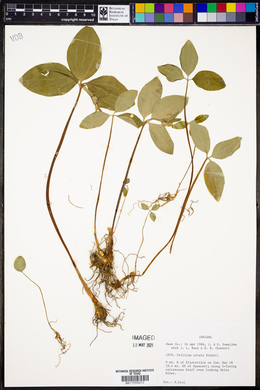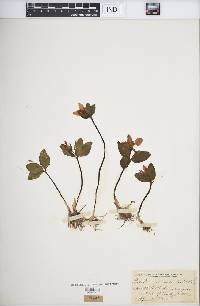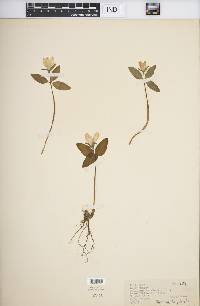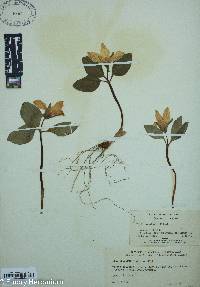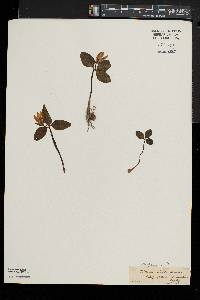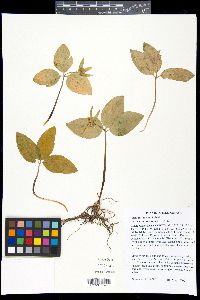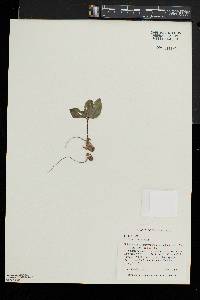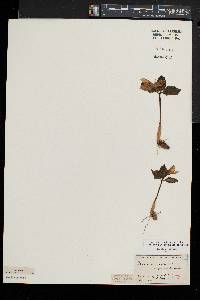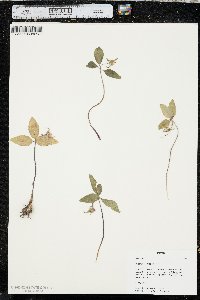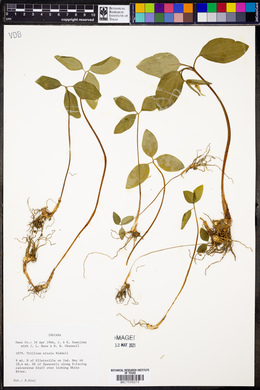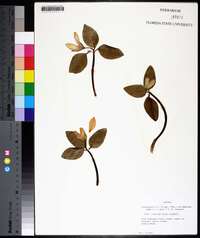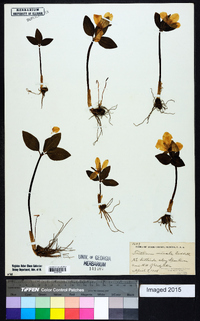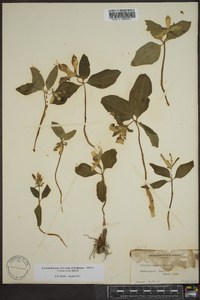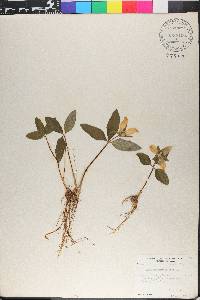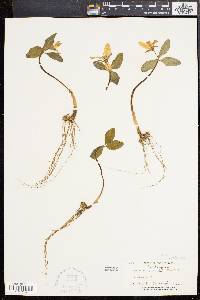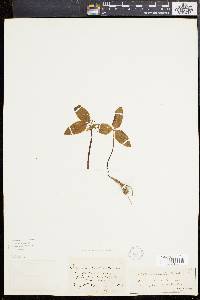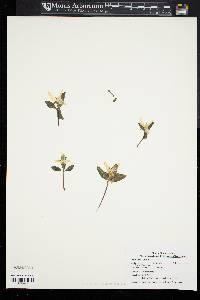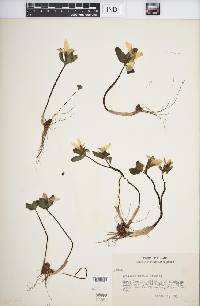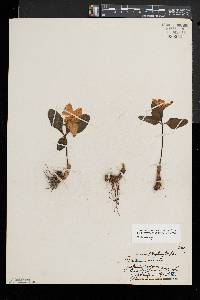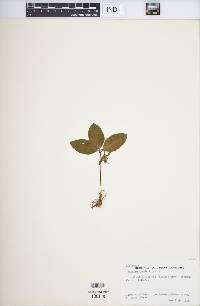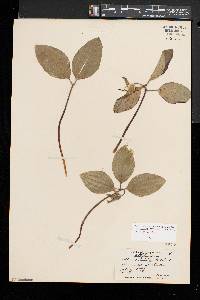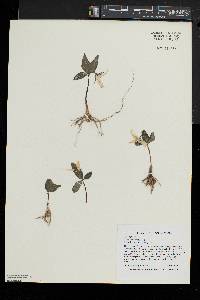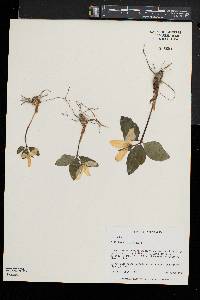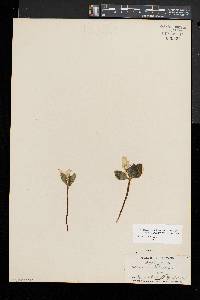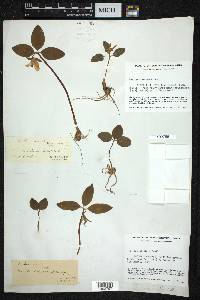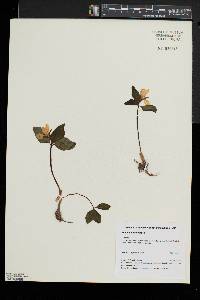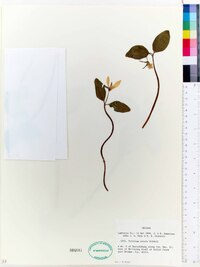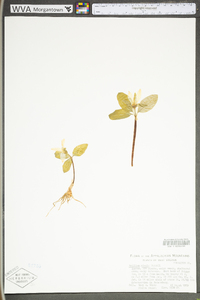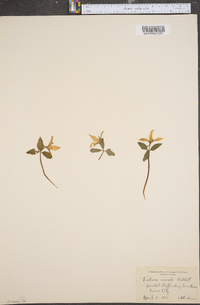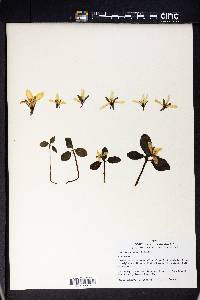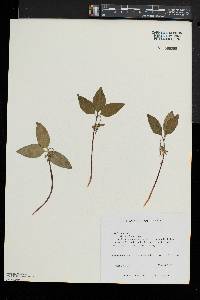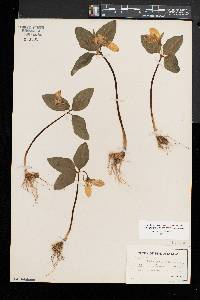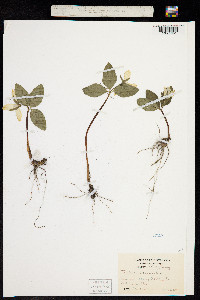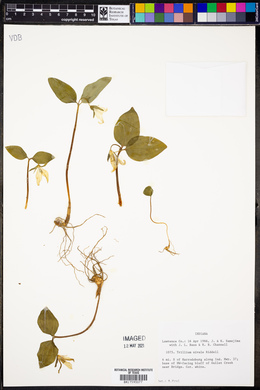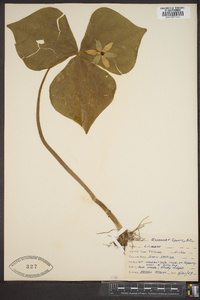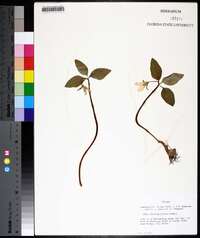
|
|
|
|
Family: Melanthiaceae
Snow Trillium, more...Dwarf White Trillium
|
Rhizomes short, praemorse. Scapes usually 1, 6-gonal in cross section, 0.3-0.5 dm at onset of anthesis, expanding to 0.45-0.8 dm, slender, glabrous. Bracts distinctly petiolate; blade bluish green, elliptic-ovate to ovate, 1.5-4.5 cm × 0.7-34 mm, base abruptly rounded to petiole, apex round-obtuse. Flower erect, fragrance sweet; sepals spreading, flat, bluish green, lanceolate, 10-32 × 2-7 mm, shorter than petals, margins entire, apex obtuse; petals very showy, recurved to erect-spreading, white, veins not engraved on adaxial surface, ovate-elliptic to oblong, 1.5-3.5+ × 0.8-1.5 cm, thin- to firm-textured, margins entire to slightly wavy, apex obtuse-acuminate; stamens straight, 5-18 mm; filaments white, slightly shorter than anthers, slender; anthers straight, pale yellow, 2.5-11 mm, thin, dehiscence introrse; ovary greenish white, ± globular, obtusely 3-angled; style with tips spreading, elongate, 0.5-1.5 mm, slender; stigmas prominent, recurved or curled, connate basally, white, linear, threadlike, 4-12+ mm; pedicel erect in anthesis, rapidly recurving below leaves after pollination, 5-20 cm. Fruits greenish white, odorless, globose-ovate, 0.6-1 × 0.5-0.8 cm, pulpy, not juicy. 2n = 10. Flowering spring (early Mar--early Apr). Forested, limestone-derived soils, alkaline glacial drift or loess, creeping soils at head of ledges, talus of cliff bases, crevices in limestone cliffs, gravelly deposits on higher floodplain riverbanks; 100--300 m; Ill., Ind., Iowa, Ky., Md., Mich., Minn., Mo., Nebr., Ohio, Pa., S.Dak., W.Va., Wis. Trillium nivale occurs primarily at the southern edge of Pleistocene glaciation and shuns humus, leaf deposits, and much plant competition.
Perennial herb with a short, stout rhizome stem 8 - 15 cm tall Flowers: single, upright, with six distinct tepals. Flower stalk more or less upright, 1 - 3 cm long, recurved in fruit. Stamens six, alternating in two whorls of three. Sepals: three, persistent, bluish green, 1 - 3.2 cm long, 2 - 7 mm wide, much shorter than the petals, lance-shaped, spreading, flat. Petals: three, white (sometimes with a pinkish base), 1.5 - 4 cm long, 0.8 - 1.5 cm wide, egg-shaped to oblong, recurved to upright-spreading, shriveling after the flowering period. Fruit: a many-seeded berry, greenish white, 0.6 - 1 cm long, 0.5 - 0.8 cm wide, rounded to egg-shaped, pulpy. Seeds many, elliptic. Similar species: This species and Trillium recurvatum differ from other Trillium species by having distinctly stalked leaves. Trillium recurvatum differs by having a stalkless flower that is typically maroon. Flowering: mid-March to late April Habitat and ecology: Rare in the Chicago Region. Typical of moist woods. Occurence in the Chicago region: native Notes: Trilliums do not actually have true leaves or stems above the ground. The underground rhizome produces scale-like leaves called cataphylls. The aboveground leaf-like structures are bracts that subtend the flower, but these are internally and externally similar to leaves and function in photosynthesis. Many authors will refer to them as leaves. Etymology: Trillium comes from the Greek word trilix, meaning triple, referring to how all the plant parts occur in threes. Nivale means snow-white. Author: The Morton Arboretum Diminutive; stem 8-15 cm at anthesis; lvs elliptic to lance- ovate or ovate, at anthesis 3-5 cm, acute or usually obtuse, rounded at base to a petiole 5-10 mm; peduncle ±erect, 1-3 cm, recurved in fr; sep lanceolate, much shorter than the pet; pet white (sometimes pinkish at base), elliptic or elliptic-obovate, 2.5-4 cm, obtuse; anthers 7-10 mm, somewhat exceeding the slender filaments; ovary subglobose, roundly 3-lobed. Rich moist woods; w. Pa. and W.Va. to Minn., s. S.D., w. Nebr., and Mo. Mar., Apr. Gleason, Henry A. & Cronquist, Arthur J. 1991. Manual of vascular plants of northeastern United States and adjacent Canada. lxxv + 910 pp. ©The New York Botanical Garden. All rights reserved. Used by permission. From Flora of Indiana (1940) by Charles C. Deam In rocky or gravelly soil in protected places on steep, wooded slopes, usually along or near streams. It is local to very local and probably closely restricted to the area indicated on the map after the reports from Clark, Decatur, and Marion Counties are added. On account of its very early appearance it may not have been collected in many places where its occurs, and it may be more widespread than the reports indicate. Authors do not mention that the stem in cross section is hexagonal with the angles more or less winged and minutely roughened. …… Indiana Coefficient of Conservatism: C = 8 Wetland Indicator Status: N/A |
|
|
|

